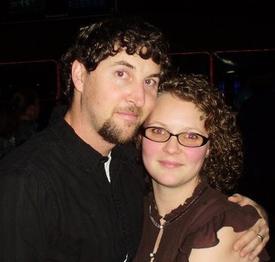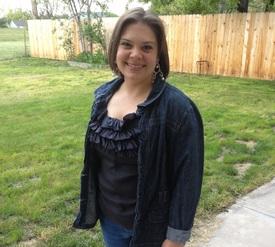What happens to body fat when you burn it?

meganwojo
Posts: 221 Member
I always wonder this. I thought this was very interesting article. Enjoy.
Question:
What happens to body fat when you burn it?
Please try to explain in laymen's terms exactly what happens when you start to burn body fat. I heard a statement that the fat cell has to get moved into the muscle cell for it to be released or burned.
Answer:
When stored body fat is burned for energy, the fat cell (also called an adipocyte) does not go anywhere or "move into the muscle cell", as it was suggested to you (although that's not too far off). Unfortunately, the fat cell stays right where it is - on top of your muscles and under the skin in your thighs, stomach, hips, arms, etc. What happens is the fat cell simply releases its contents into the bloodstream as free fatty acids (FFA's).
When the FFA's are released from the fat cell, the fat cell shrinks and that's why you look leaner when you lose body fat - because the fat cell is now smaller. A small or "empty" fat cell is what you want.
Each of us inherits a pre-determined number of fat cells. This number may increase, especially through the growing childhood and teenage years, but it cannot decrease, except though such drastic (and dangerous) measures as liposuction.
What does change frequently is the SIZE of the fat cell. Body fat is basically just a reserve source of energy. The fat cell is the storage depot for this energy in the form of triglycerides (fat). The cell grows or shrinks in size depending on how "filled" it is.
Picture a balloon that is not inflated: It's tiny when not filled with air - maybe the size of your thumb. When you blow it up with air, it can expand 10 or 20 times it's normal size, because it simply fills up. That's what happens to fat cells: They start nearly empty (when you are lean), and when energy intake exceeds your needs, your fat cells "blow up" like balloons. (not a pretty picture, is it?)
When your energy needs exceed your intake, your body releases hormones and enzymes that signal your fat cells to release fat instead of keeping it in storage. Then the stored fat (energy) gets released into your bloodstream as FFA's and they are shuttled off to the muscles where the energy is needed. As blood flow increases to the active muscles, more FFA's are delivered to the muscles that need them.
An important enzyme called lipopoprotein lipase (LPL), then helps the FFA's get inside the mitochondria of the muscle cell, where the FFA's can be burned for energy. If you've ever taken a biology class, then you're probably heard of the mitochondria. This is the "cellular powerhouse" where energy production takes place and this is where the FFA's go to be burned for energy.
The fat cell however, is still right were is was before (in your thighs, lower abs, etc), waiting to be filled up with more fat if you're not careful (so keep using energy and burning more calories than you consume so your fat cells get empty and stay empty!)
Question:
What happens to body fat when you burn it?
Please try to explain in laymen's terms exactly what happens when you start to burn body fat. I heard a statement that the fat cell has to get moved into the muscle cell for it to be released or burned.
Answer:
When stored body fat is burned for energy, the fat cell (also called an adipocyte) does not go anywhere or "move into the muscle cell", as it was suggested to you (although that's not too far off). Unfortunately, the fat cell stays right where it is - on top of your muscles and under the skin in your thighs, stomach, hips, arms, etc. What happens is the fat cell simply releases its contents into the bloodstream as free fatty acids (FFA's).
When the FFA's are released from the fat cell, the fat cell shrinks and that's why you look leaner when you lose body fat - because the fat cell is now smaller. A small or "empty" fat cell is what you want.
Each of us inherits a pre-determined number of fat cells. This number may increase, especially through the growing childhood and teenage years, but it cannot decrease, except though such drastic (and dangerous) measures as liposuction.
What does change frequently is the SIZE of the fat cell. Body fat is basically just a reserve source of energy. The fat cell is the storage depot for this energy in the form of triglycerides (fat). The cell grows or shrinks in size depending on how "filled" it is.
Picture a balloon that is not inflated: It's tiny when not filled with air - maybe the size of your thumb. When you blow it up with air, it can expand 10 or 20 times it's normal size, because it simply fills up. That's what happens to fat cells: They start nearly empty (when you are lean), and when energy intake exceeds your needs, your fat cells "blow up" like balloons. (not a pretty picture, is it?)
When your energy needs exceed your intake, your body releases hormones and enzymes that signal your fat cells to release fat instead of keeping it in storage. Then the stored fat (energy) gets released into your bloodstream as FFA's and they are shuttled off to the muscles where the energy is needed. As blood flow increases to the active muscles, more FFA's are delivered to the muscles that need them.
An important enzyme called lipopoprotein lipase (LPL), then helps the FFA's get inside the mitochondria of the muscle cell, where the FFA's can be burned for energy. If you've ever taken a biology class, then you're probably heard of the mitochondria. This is the "cellular powerhouse" where energy production takes place and this is where the FFA's go to be burned for energy.
The fat cell however, is still right were is was before (in your thighs, lower abs, etc), waiting to be filled up with more fat if you're not careful (so keep using energy and burning more calories than you consume so your fat cells get empty and stay empty!)
0
Replies
-
interesting article - thanks for sharing!0
-
Thanks, I really liked that article.0
-
great article loving the simple explanations for those of us who do not hav e a physiology or kenisiology degree....thanks0
-
THANKS FOR POSTING!! very helpful!!0
-
Thanks for sharing this story..I found this very interesting and always wondered myself what happen to it and where it went..now I am more clear on that subject..and even more motivated to loss this weight and keep it off with my new life style change..0
-
Thanks for sharing this story..I found this very interesting and always wondered myself what happen to it and where it went..now I am more clear on that subject..and even more motivated to loss this weight and keep it off with my new life style change..0
-
haha it just seems so odd because you literally dont see fat falling off your body so it was so hard for me to fathom where it really goes... this def explained where the fat does go!0
-
Thanks for sharing!0
-
I've always wondered wher it goes! That was a great article. Makes it easier to think of food as fuel.0
-
great article! very clear word picture.0
-
hahahha good question!!0
-
Wonderful article! Thanks so much for sharing :flowerforyou:0
-
thanks for the post!0
-
Hmm..so it's not so much burning fat as deflating the fat balloons...that's a great mental image. :-P0
-
Excellent post for clearing it up for the masses. The only problem I have is that it still used the term "burning" when referring to the release of energy. You can actually burn sugar (marshmallows anyone?), but fire is not good in your body. Your cells are much more controlled. They got it almost 100% correct.0
This discussion has been closed.
Categories
- All Categories
- 1.4M Health, Wellness and Goals
- 398.3K Introduce Yourself
- 44.7K Getting Started
- 261K Health and Weight Loss
- 176.4K Food and Nutrition
- 47.7K Recipes
- 233K Fitness and Exercise
- 462 Sleep, Mindfulness and Overall Wellness
- 6.5K Goal: Maintaining Weight
- 8.7K Goal: Gaining Weight and Body Building
- 153.5K Motivation and Support
- 8.4K Challenges
- 1.4K Debate Club
- 96.5K Chit-Chat
- 2.6K Fun and Games
- 4.7K MyFitnessPal Information
- 17 News and Announcements
- 21 MyFitnessPal Academy
- 1.5K Feature Suggestions and Ideas
- 3.2K MyFitnessPal Tech Support Questions












